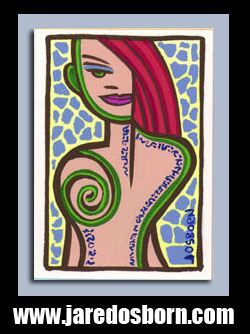In looking around the internet lately I’ve noticed cartoonists posting demos of them working in a relatively new program called Manga Studio EX. I enjoy a good demo video but, let’s face it, most such videos are dull. Drawing is just not a performance art and watching somebody draw on a computer seems to make it even duller. But it got me contemplating the place of the computer in making comics and comic art.
The use of computers to make comics is nothing new. It’s been going on for at least fifteen years but mostly computers have been used on the production and coloring end of comics. Until lately not a lot of people drew comics on a computer. Brian Bolland immediately springs to mind. His comic book cover illustrations have been made completely via computer for years now. But he was the only one I knew of who did things that way. Now he is far from alone. I keep reading about new people doing all of their drawing and cartooning on the computer.
I think there are two things driving this trend. The Wacom Cintiq and the Manga Studio program. For years artists have been using pressure sensitive tablets from Wacom and other manufacturers in order to draw on the computer. But they are not easy for novices to draw with. The pen is on the tablet but the line comes out on the computer screen. It takes practice to draw when you can’t look at your hand. The Wacom Cintiq is a pressure sensitive tablet that is a computer screen. For about two grand you get a twenty one inch LCD screen that you can draw on with a pressure sensitive pen. Much less of a learning curve than a regular tablet. That smaller learning curve is key.
Photoshop has been the program of choice for artists in general for ages now. Almost all comic book production and coloring is done in it. When you see comic books being printed from “Enhanced pencils” rather than ones that are traditionally inked that just means that someone played with Photoshop sliders to make the pencils look more like inks. Inking is actually pretty hard to do in Photoshop. At least for a novice.
Inking for comic books is usually done with a pointed paintbrush or a old fashioned dip pen dipped in ink. The ink is then applied to the paper. The inker basically re-draws the pencil work in ink adding shadows, light, and giving it its final form. This is something that can be done in Photoshop but the brush and pen tools are not set up by default to do this. They’re set up to manipulate photos. If you want to ink comics in Photoshop you have to fool around with the brush settings and figure out how to do it. It’s a pretty steep learning curve for the novice. There are a lot of bells, whistle , and distractions in Photoshop.
This is where Manga Studio comes in. I’m no expert in the program and have only fiddled around in it a little bit but I can see why so many young artists have embraced it. It doesn’t do anything Photoshop can’t but because it’s specifically made to create comics it takes away the steep learning curve of how to use the tools. There is no figuring out how to make the brush tool mimic an ink line. That’s its default setting. There are also perspective drawing aids that make things easier.
Learning to use a real ink brush or pen takes time and practice. Some inkers are pen people and some are brush people. It’s just what suits you but the novice won’t even know which until he tries one or the other and spends time learning each. I took to a brush but not so much a pen. I’ve seen people pick up a brush and grow frustrated and put it down forever. Manga Studio eliminates that frustration.
A novice can make a perfect thick to thin ink line on the first try. The skill needed to use the tool is minimal. That doesn’t mean the novice will know what he is doing and do a nice job but it does mean he doesn’t have to spend time learning to make the most basic marks with his pen or brush. The program also makes hatching and crosshatching marks that it would take even more time and practice to learn. All this is right out of the box with a minimal learning curve.
Add those things together, a program that makes inking simpler to learn, drawing aids, a computer screen you can draw on, and then throw in how easy it is to correct mistakes on a computer compared to ink on paper and it’s no wonder so many new cartoonists are embracing making comics without pen, paper, and pencil. Besides the initial costs it’s easier to get started.
This all brings me to wonder about the state of original art in the comic world. I and many others collect the original pen and ink art used to make comic books. With digitally created art such work doesn’t exist. Will it in the future? Sure the vast majority of comic art is still ink on paper but for how long? More and more artist who learned to draw on computer and have no idea how to use physical world tools will emerge but will they ever be the majority? I have no idea. We’ll see what the future brings.

Discussion ¬